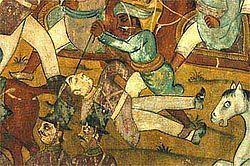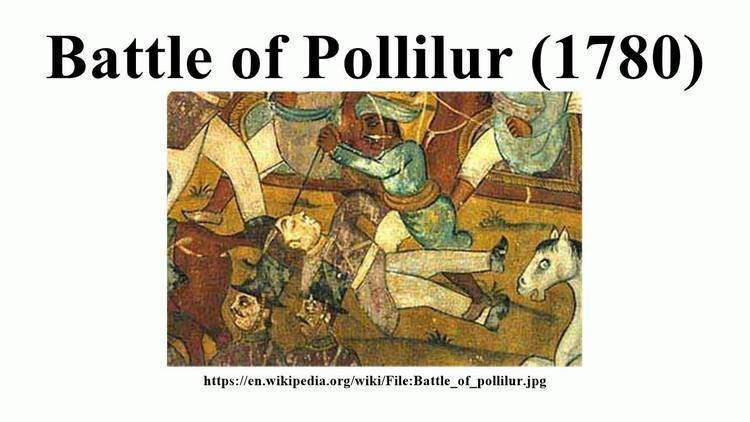3000 killed,200 to 7,000 captured Unknown Result Mysore victory | Date 10 September 1780 | |
4,000 to 7,000 2,000–3,000 cavalry & rocket-men Similar Second Anglo‑Mysore War, Battle of Porto Novo, Battle of Sholinghur, Siege of Seringapatam, Anglo‑Mysore Wars | ||
The Battle of Pollilur, also known as the Battle of Polilore or Battle of Perambakam, took place on 10 September 1780 at Pollilur near the city of Kanchipuram in present-day Tamil Nadu state, India as part of the Second Anglo-Mysore War. It was waged between two forces commanded by Tipu Sultan of the Kingdom of Mysore, and Colonel William Baille of the British East India Company. The army of the East India Company surrendered and suffered a high number of casualties. It was the worst loss the British suffered on the subcontinent until Chillianwala.
Contents

Tipu prevented Col. Baillie, at Guntur, from joining Hector Munro at Canjeevaram, while Tipu's father Hyder continued the siege at Arcot. Of the 3853 British men under Baillie's command, only 50 officers and 200 men were taken prisoner after the "general massacre". Baillie was taken to Seringapatam.

Battle of pollilur 1780
Aftermath

Baille and many of his officers were captured and taken to the Mysore capital at Srirangapattana. After British reinforcements from Calcutta arrived, Eyre Coote was able to stabilise the situation and counter-attack. A second battle was fought a year later in the same area where Coote defeated Haider Ali's forces.
Rockets
The Mysore rockets used during the battle were much more advanced than the British East India Company had previously seen, chiefly because of the use of iron tubes for holding the propellant; this enabled higher thrust and longer range for the missile (up to 2 km range). After Tipu Sultan's eventual defeat in the Fourth Anglo-Mysore War and the capture of the Mysore iron rockets, they were influential in British rocket development, inspiring the Congreve rocket, which was soon put into use in the Napoleonic Wars.
